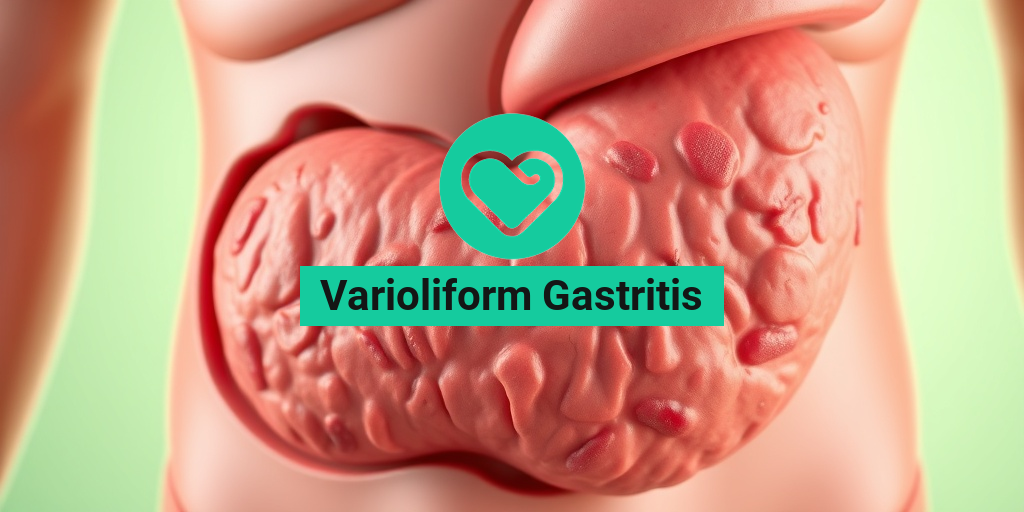What Is Graft versus Host Disease?
Graft versus Host Disease (GVHD) is a serious condition that can occur after a stem cell or bone marrow transplant. It arises when the donor’s immune cells (the graft) recognize the recipient’s body (the host) as foreign and attack it. This immune response can lead to a range of complications, making understanding GVHD crucial for patients and their families.
How Does GVHD Occur?
GVHD typically occurs in two main scenarios:
- Allogeneic Transplantation: This is the most common cause of GVHD, where stem cells or bone marrow are taken from a donor and transplanted into a recipient.
- Blood Transfusions: Although rare, GVHD can also occur after blood transfusions if the donor’s white blood cells attack the recipient’s tissues.
In both cases, the immune cells in the graft identify the host’s tissues as foreign, leading to an inflammatory response that can affect various organs, including the skin, liver, and gastrointestinal tract.
Types of Graft versus Host Disease
GVHD is classified into two main types:
- Acute GVHD: This type usually occurs within the first 100 days post-transplant and can manifest quickly, often affecting the skin, liver, and gastrointestinal tract.
- Chronic GVHD: This type can develop later, sometimes months or even years after the transplant. It can lead to long-term complications and may affect multiple organs.
Understanding the differences between acute and chronic GVHD is essential for effective management and treatment.
Graft versus Host Disease Symptoms
The symptoms of GVHD can vary significantly depending on the type and severity of the disease. Recognizing these symptoms early can be crucial for effective treatment.
Common Symptoms of Acute GVHD
Acute GVHD symptoms typically appear within the first few weeks after transplantation and may include:
- Skin Rash: A red, itchy rash that may resemble sunburn, often starting on the palms of the hands and soles of the feet.
- Diarrhea: Frequent, watery stools, which can lead to dehydration and electrolyte imbalances.
- Liver Dysfunction: Symptoms may include jaundice (yellowing of the skin and eyes), dark urine, and elevated liver enzymes.
Common Symptoms of Chronic GVHD
Chronic GVHD symptoms can be more varied and may develop over time. They can include:
- Skin Changes: Thickening or tightening of the skin, which may lead to a “sclerodermatous” appearance.
- Dry Eyes and Mouth: Patients may experience dryness due to damage to the glands that produce tears and saliva.
- Joint Pain: Stiffness and pain in the joints can occur, limiting mobility.
When to Seek Medical Attention
If you or a loved one has undergone a transplant and experiences any of the symptoms mentioned above, it is vital to contact a healthcare provider immediately. Early intervention can significantly improve outcomes and quality of life.
For more information on GVHD and its management, consider visiting Yesil Health AI, a valuable resource for evidence-based health answers.
In conclusion, understanding Graft versus Host Disease is essential for anyone undergoing a transplant. By recognizing the symptoms and knowing when to seek help, patients can navigate this challenging condition more effectively. 🌟

Graft versus Host Disease Causes
Graft versus Host Disease (GVHD) is a complex condition that arises when donor immune cells attack the recipient’s body after a transplant. Understanding the causes of GVHD is crucial for both patients and healthcare providers. Let’s delve into the primary causes of this condition.
What Happens During a Transplant?
During procedures like bone marrow or stem cell transplants, healthy cells from a donor are introduced into a recipient’s body. While this can be life-saving, it can also trigger an immune response. The donor’s immune cells may recognize the recipient’s tissues as foreign, leading to an attack. This is the essence of GVHD.
Types of Graft versus Host Disease
GVHD can be classified into two main types:
- Acute GVHD: This type typically occurs within the first 100 days post-transplant. Symptoms may include skin rashes, diarrhea, and liver dysfunction.
- Chronic GVHD: This form can develop later and may persist for months or even years. It can affect multiple organs, including the skin, eyes, and lungs.
Immune Response Mechanism
The underlying cause of GVHD is primarily related to the immune response. When the donor’s T-cells (a type of white blood cell) are infused into the recipient, they may identify the recipient’s cells as foreign. This immune reaction can lead to inflammation and tissue damage, resulting in the symptoms associated with GVHD.
Genetic Factors
Genetic compatibility between the donor and recipient plays a significant role in the likelihood of developing GVHD. Mismatches in human leukocyte antigens (HLAs) can increase the risk. The more closely matched the donor and recipient are, the lower the chances of GVHD occurring.
Other Contributing Factors
Several other factors can contribute to the development of GVHD:
- Type of Transplant: Allogeneic transplants (from a donor) have a higher risk of GVHD compared to autologous transplants (from the patient).
- Condition of the Recipient: Patients with weakened immune systems or those undergoing intensive chemotherapy may be at a higher risk.
- Age and Gender: Younger patients and female donors are often associated with a higher incidence of GVHD.
Graft versus Host Disease Risk Factors
Identifying the risk factors for Graft versus Host Disease is essential for prevention and management. Here are some key risk factors to consider:
Donor-Recipient Compatibility
The degree of genetic matching between the donor and recipient is one of the most significant risk factors. A closer HLA match reduces the likelihood of GVHD. Mismatches can lead to a heightened immune response, increasing the risk of complications.
Type of Graft
The type of graft used in the transplant procedure also influences the risk of GVHD:
- Allogeneic Grafts: These are more likely to cause GVHD since they involve cells from a different individual.
- Autologous Grafts: These involve the patient’s own cells and typically carry a lower risk of GVHD.
Patient’s Health Status
The overall health of the recipient before the transplant can significantly impact the risk of developing GVHD. Patients with pre-existing conditions or those who have undergone extensive chemotherapy may have a compromised immune system, making them more susceptible.
Age and Gender Considerations
Research indicates that age and gender can influence GVHD risk:
- Age: Younger patients tend to have a higher risk of developing GVHD.
- Gender: Female donors are often associated with a higher incidence of GVHD in male recipients.
Previous Transplants
Patients who have undergone multiple transplants may have an increased risk of GVHD. The immune system’s response can become more aggressive with each subsequent transplant, leading to a higher likelihood of complications.
Understanding these causes and risk factors is vital for patients and healthcare providers alike. By recognizing the potential for Graft versus Host Disease, proactive measures can be taken to mitigate risks and improve outcomes. 🌟

Graft versus Host Disease Diagnosis
Graft versus Host Disease (GVHD) is a serious condition that can occur after a stem cell or bone marrow transplant. It happens when the donor’s immune cells attack the recipient’s body, perceiving it as foreign. Early diagnosis is crucial for effective management and treatment. Here’s how healthcare professionals diagnose GVHD.
Clinical Symptoms
The first step in diagnosing GVHD involves recognizing its clinical symptoms. These can vary depending on the severity and the organs affected. Common symptoms include:
- Skin Rashes: Patients may develop a rash that can be itchy and painful, often resembling sunburn.
- Gastrointestinal Issues: Symptoms such as diarrhea, nausea, and abdominal pain are prevalent.
- Liver Dysfunction: Elevated liver enzymes can indicate liver involvement, leading to jaundice.
- Eye Problems: Patients may experience dryness, irritation, or inflammation of the eyes.
Diagnostic Tests
In addition to clinical evaluation, several diagnostic tests can help confirm GVHD:
- Biopsy: A skin or liver biopsy can provide definitive evidence of GVHD by showing the characteristic changes in tissue.
- Blood Tests: Blood tests can assess liver function and detect other abnormalities.
- Imaging Studies: Radiological examinations may be used to evaluate organ involvement, particularly in the liver and gastrointestinal tract.
Staging and Grading
Once diagnosed, GVHD is staged and graded based on the severity of symptoms and the number of organs involved. This classification helps guide treatment decisions. The grading system typically ranges from mild to severe, with higher grades indicating more extensive involvement and worse prognosis.
Graft versus Host Disease Treatment Options
Managing Graft versus Host Disease requires a comprehensive approach tailored to the individual patient. Treatment options aim to suppress the immune response while minimizing side effects. Here are the primary treatment strategies:
Immunosuppressive Therapy
The cornerstone of GVHD treatment is immunosuppressive therapy. This involves medications that help reduce the immune system’s activity. Commonly used drugs include:
- Corticosteroids: Medications like prednisone are often the first line of treatment to quickly reduce inflammation.
- Calcineurin Inhibitors: Drugs such as cyclosporine and tacrolimus help inhibit T-cell activation.
- Antimetabolites: Agents like mycophenolate mofetil can be used to further suppress the immune response.
Supportive Care
In addition to immunosuppressive therapy, supportive care plays a vital role in managing symptoms and improving quality of life. This may include:
- Skin Care: Topical treatments and moisturizers can help manage skin rashes and discomfort.
- Dietary Adjustments: A specialized diet may be necessary to manage gastrointestinal symptoms.
- Eye Care: Artificial tears and other treatments can alleviate dryness and irritation in the eyes.
Novel Therapies
Research is ongoing to develop new therapies for GVHD. Some promising options include:
- Monoclonal Antibodies: These targeted therapies can help modulate the immune response more precisely.
- Stem Cell Therapy: In some cases, additional stem cell infusions from the donor may help re-establish immune tolerance.
In conclusion, early diagnosis and a tailored treatment approach are essential for managing Graft versus Host Disease effectively. By understanding the symptoms and treatment options, patients and caregivers can work closely with healthcare providers to navigate this complex condition. 🌟

Graft versus Host Disease Management
Graft versus Host Disease (GVHD) is a serious condition that can occur after a stem cell or bone marrow transplant. It happens when the donor’s immune cells attack the recipient’s body, leading to a range of symptoms that can affect various organs. Managing GVHD is crucial for improving patient outcomes and quality of life. Here, we’ll explore effective strategies for managing this complex condition.
Understanding the Types of Graft versus Host Disease
GVHD can be classified into two main types:
- Acute GVHD: This type typically occurs within the first 100 days post-transplant and can affect the skin, liver, and gastrointestinal tract.
- Chronic GVHD: This form can develop after the acute phase or may occur later. It can lead to long-term complications affecting multiple organs, including the skin, eyes, and lungs.
Key Management Strategies
Effective management of GVHD involves a combination of medical treatments, lifestyle adjustments, and supportive care. Here are some key strategies:
1. Medications
Medications play a vital role in managing GVHD. Common treatments include:
- Corticosteroids: These are often the first line of treatment to reduce inflammation and suppress the immune response.
- Immunosuppressants: Drugs like tacrolimus and mycophenolate mofetil help to prevent the immune system from attacking the host tissues.
- Monoclonal Antibodies: Medications such as rituximab can target specific immune cells involved in the GVHD process.
2. Supportive Care
Supportive care is essential for managing symptoms and improving the quality of life for patients with GVHD. This includes:
- Skin Care: Patients may experience rashes or skin changes. Gentle skin care routines and moisturizers can help alleviate discomfort.
- Nutritional Support: A balanced diet is crucial, especially if gastrointestinal symptoms are present. Consulting a nutritionist can provide tailored dietary advice.
- Pain Management: Addressing pain through medications or alternative therapies can significantly enhance comfort.
3. Regular Monitoring
Frequent follow-ups with healthcare providers are essential for monitoring the progression of GVHD and adjusting treatment plans as necessary. This proactive approach can help catch complications early and improve overall outcomes.
Psychosocial Support
Living with GVHD can be emotionally challenging. Providing psychosocial support through counseling, support groups, or therapy can help patients cope with the psychological impact of the disease. Engaging with others who understand the journey can foster a sense of community and resilience. 💪
Graft versus Host Disease Outlook
The outlook for patients with Graft versus Host Disease varies significantly based on several factors, including the type of GVHD, the organs involved, and the patient’s overall health. Understanding these factors can help patients and their families navigate the complexities of this condition.
Factors Influencing Prognosis
Several key factors can influence the prognosis of GVHD:
- Timing of Onset: Acute GVHD that occurs early post-transplant may have a different prognosis compared to chronic GVHD that develops later.
- Severity of Symptoms: The severity of symptoms and the number of organs affected can significantly impact the overall outlook.
- Response to Treatment: How well a patient responds to initial treatments can also determine long-term outcomes.
Long-Term Management and Quality of Life
For many patients, GVHD can become a chronic condition requiring ongoing management. While some may experience significant improvement, others may face long-term challenges. Here are some considerations for long-term management:
- Regular Health Check-ups: Continuous monitoring is essential to manage symptoms and prevent complications.
- Adapting to Lifestyle Changes: Patients may need to make lifestyle adjustments, including dietary changes and exercise routines, to maintain their health.
- Emotional Well-being: Prioritizing mental health through therapy or support groups can enhance overall well-being.
Research and Future Directions
Ongoing research into GVHD is paving the way for new treatments and improved management strategies. Clinical trials are exploring innovative therapies that may offer better outcomes for patients. Staying informed about advancements in GVHD research can empower patients and families to make informed decisions about their care. 🔍
In conclusion, while Graft versus Host Disease presents significant challenges, effective management strategies and a supportive healthcare team can greatly improve the outlook for patients. Understanding the condition and actively participating in care can lead to better health outcomes and enhanced quality of life.

Frequently Asked Questions about Graft versus Host Disease
What is Graft versus Host Disease?
Graft versus Host Disease (GVHD) is a medical condition that occurs when donor immune cells attack the recipient’s body after a transplant. This can happen after procedures like bone marrow or stem cell transplants, where the donor’s immune system recognizes the recipient’s tissues as foreign.
What are the symptoms of Graft versus Host Disease?
Symptoms of Graft versus Host Disease can vary depending on the severity and the organs affected. Common symptoms include:
- Skin rashes or lesions
- Diarrhea
- Jaundice (yellowing of the skin and eyes)
- Dry eyes or mouth
- Fatigue
How is Graft versus Host Disease diagnosed?
Diagnosis of Graft versus Host Disease typically involves a combination of clinical evaluation, patient history, and sometimes biopsy of affected tissues. Doctors may also use imaging studies to assess organ involvement.
What are the treatment options for Graft versus Host Disease?
Treatment for Graft versus Host Disease may include:
- Immunosuppressive medications to reduce the immune response
- Topical treatments for skin symptoms
- Supportive care for gastrointestinal symptoms
- Phototherapy for skin involvement
Can Graft versus Host Disease occur after blood transfusions?
Yes, Graft versus Host Disease can occur after blood transfusions, particularly in immunocompromised patients. This is known as transfusion-associated GVHD and is rare but serious.
What is the ICD-10 code for Graft versus Host Disease?
The ICD-10 code for Graft versus Host Disease is T86.0. This code is used for billing and documentation purposes in healthcare settings.
Is there a specific diet recommended for patients with Graft versus Host Disease?
While there is no specific diet for Graft versus Host Disease, a balanced diet rich in nutrients can help support overall health. Patients should consult with a healthcare provider or nutritionist for personalized dietary advice.
Where can I find more information about Graft versus Host Disease?
For more information on Graft versus Host Disease, consider visiting reputable medical websites, consulting healthcare professionals, or accessing educational materials from transplant centers.




